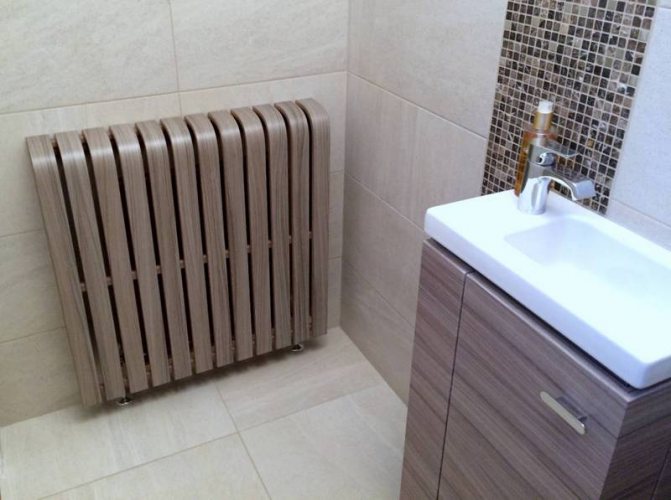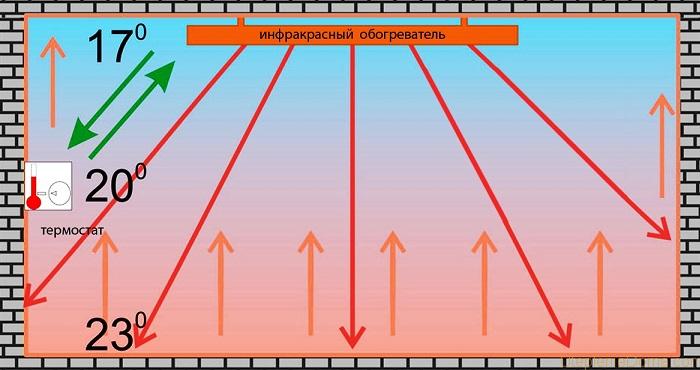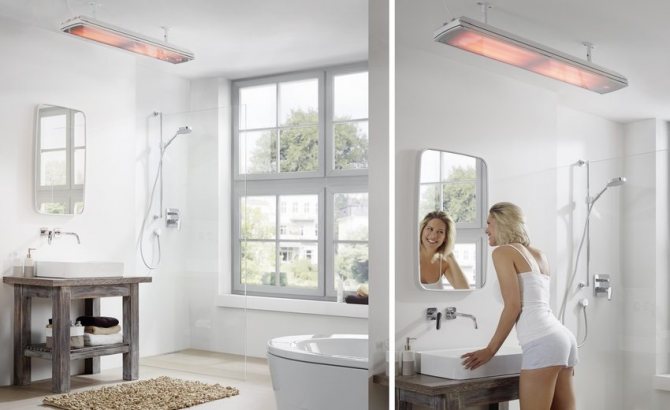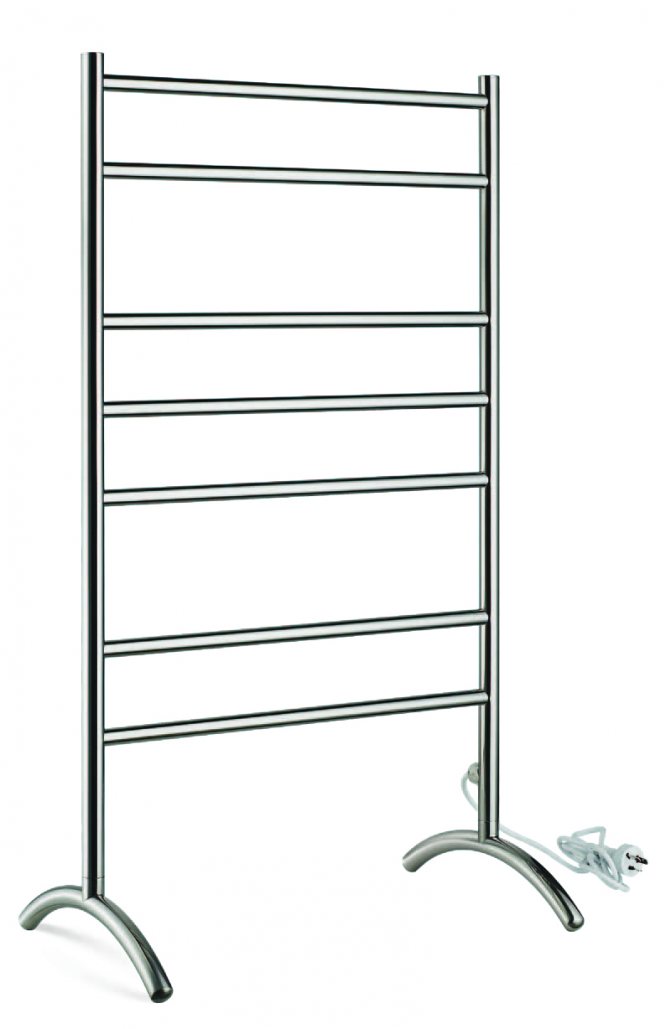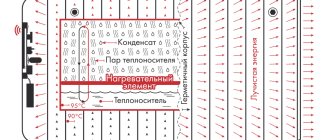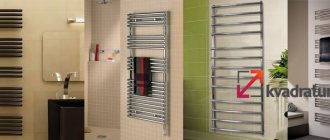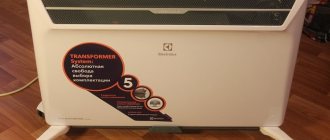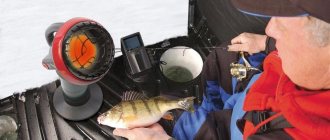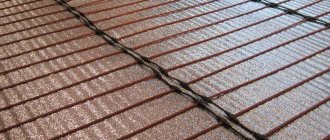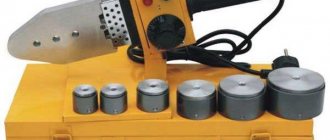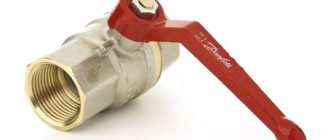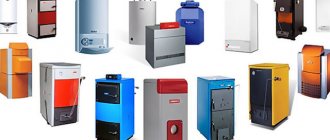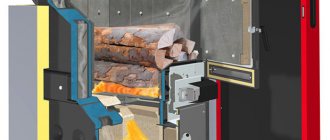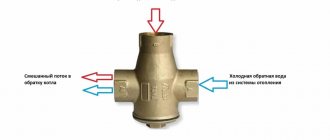In the absence of centralized heating in the bathroom, the issue of heating becomes very acute, it is especially relevant in the cold season. It is important to choose the right bathroom heater. First, a sharp change in temperature during and after swimming can negatively affect health. Secondly, the lack of heating and regular evaporation of hot water contribute to the development of mold and mildew, which also poses a threat to the human body.
The heater in the bathroom must be adapted to work in high humidity conditions
Types of bathroom heaters
Any heater intended for use in a bathroom must meet the following requirements:
- tolerate temperature changes well;
- be safe when exposed to dampness, hot water vapor and even splashes;
- must be made of non-corrosive materials;
- have a compact size, suitable for any bathroom area;
- have sufficient power to heat the entire area of the room;
- have a versatile look that will suit any room design.
Among the many types of heating devices adapted for heating a bathroom, it is worth considering the most versatile and meeting all requirements.
Electric Wall Mounted Bathroom Heaters
Heat transfer when using wall-mounted energy-saving bathroom heaters occurs due to the conversion of electricity into heat. Modern equipment makes it possible to use up to 90% of the energy expended. The well-known heavy floor heaters are replacing their practical and compact counterparts. Many of them have a more aesthetic appearance to suit any modern interior.
In wall heaters, different heating methods can be used. It also provides additional options for temperature control, safe use and control over the device.
Some bathroom heaters can be used to dry towels
Considering the heating method, electric heaters are divided into the following types:
- infrared models, in which heating is carried out by radiation of heat rays;
- convection appliances, which are characterized by the movement of heated air flows - they pass through the heating element.
Infrared heaters for the bathroom
This type of bathroom heater is quite economical and is placed either on the wall or on the ceiling. The infrared heater for the bathroom is arranged quite simply: it is a quartz radiator and a plate that directly radiates heat. A characteristic feature of the plate is its ability to heat up to 250-260 degrees Celsius.
The principle of operation of the heater is reduced to heating the air to a certain temperature and then turning it off. Further, when the temperature drops, it is turned on again.
The advantages of this type of heating are as follows:
- compact size and location not on the floor, which helps to save minimal space in the bathroom;
- when the heater is operating, not only the air is warmed up, but also the surrounding objects (walls, floor, furniture);
- safety of infrared rays;
- reliability and efficiency;
- the presence of a thermostat;
- wide range of models.
The disadvantages of infrared heaters include their considerable cost. Of course, over time, this method of heating will pay off, but it will require an immediate investment of a fairly large amount.
Infrared heaters do not take up space and fit well into the overall design Attention! A ceiling infrared heater for a bathroom makes it possible to direct the rays to a certain point in the room, due to which certain places are heated faster.
Bathroom liquid heaters
Liquid heaters in the bathroom are most often presented in the form of a heated towel rail. It is a curved pipe that connects to your home's heating system.
However, it should be borne in mind that the heat transfer from it will not be too noticeable, since such a design does not provide for the presence of an additional heat-dissipating surface.
In addition, at the end of the heating season, the heated towel rail remains filled with cold water. This contributes to the development of metal corrosion - due to condensate that settles on the pipe.
For spacious and cool rooms, you can choose an additional heat source that will warm the air more efficiently.
Heat fan
The principle of operation of the fan heater is that air is blown through the heating element. Most often, this role is played by a spiral or a ceramic plate. Thanks to this device, the air in the room is able to warm up quite quickly. And the presence of a power regulator makes it possible to achieve the desired temperature in the room.
It should be noted that fan heaters with ceramic plates as heating elements are safer and more practical to use. The heat source itself in working condition has a low temperature, due to which the air in the room does not dry out, and the device is able to last a longer period.
Fan heaters with a power exceeding 5 kW are called heat guns. In addition to heating, they are also used when it is necessary to dry or ventilate the room, as well as during certain repair work (when installing stretch ceilings). This option is better suited for heating large rooms.
Advantages of fan heaters:
- warm up the air quickly, directionally and contribute to the even distribution of heat throughout the room;
- are fairly compact in size;
- differ in budgetary price;
- able to turn off in case of accidental fall;
- have overheating protection.
However, along with this, fan heaters also have some disadvantages:
- are capable of making noise when operating at high speeds;
- with prolonged use, they dry out the air in the room;
- in the presence of dust and dampness in the room, they can give off an unpleasant odor.
The device is compact, it is easy to move it to another room if necessary
Cable heaters for the bathroom
Cable heaters are also made in the form of heated towel rails. However, unlike liquid options, there is a cable mounted inside. The principle of operation of this heater resembles a warm floor device. However, the device uses much less electricity.
This type of heater is distinguished by its varied design and relatively low cost. The disadvantages of cable heaters include their rapid cooling after turning off, as well as the need to pay special attention to the state of the wiring.
In addition, when installing cable heaters, certain conditions must be adhered to:
- the place chosen for the installation of the heater must be protected from moisture - the distance to the bathtub or sink must be at least 60-70 cm;
- the distance to the floor should be at least 20-25 cm, to the wall - 30-35 cm, to the nearest pieces of furniture - 75-80 cm;
- the heated towel rail cannot be installed directly under the outlet;
- obligatory presence of only hidden electrical wiring.
The advantage of this model is the ability to use as needed at any time of the year.
Universal way of tapping
Depending on what needs are pursued, the heated towel rail is connected to the pipes of the water supply system using the upper or lower pipes. But you need to remember about the loss of power (by 10 percent) if the connection is made through the lower pipes. In the case of replacing the old coil with a battery-ladder, it is better to use a model with a side connection, the center distance of which is 50 centimeters.
The electric wall-mounted battery for the bathroom should not be placed closer than 60 centimeters from the toilet, sink, bath. The socket must be equipped with an O-ring and the plug must have good insulation. This type of battery should only be installed by a professional.
The coil works on the principle of a gravity pump. If you cut it in correctly, then natural circulation and correct operation of the radiator are guaranteed. It is necessary to develop an installation scheme, clearly following the instructions of the model, as well as taking into account the location of the riser in the bathroom.
For most models, the optimal tie-in option is to supply the coolant through the upper outlets (and the outlet is done from the bottom). It is achieved using universal connections for the battery in the bathroom (there are photos of examples of work in our article). This type of tie-in has a number of advantages:
- the direction and speed of water supply in the riser does not in any way affect the performance of the battery;
- there is no need to bleed air after the circulation is turned off.
Another important advantage is the independence of the installation from the location of the riser.
Water heater
How to properly connect a water heated towel rail or radiator?
Here are some simple guidelines based on my personal experience.
- A bypass is required before the dryer or battery. It will ensure the permeability of the riser or piping when the heater is off (for example, in summer heat);
- To shut off the dryer, it is better to install ball valves rather than screw or plug valves. They do not require maintenance, they always hold water tightly and have a huge resource;
- It is better to connect both the dryer and the radiator not with drives, but with Americans. In this case, installing and dismantling a heated towel rail (for example, for laying tiles under it) will take no more than a couple of minutes.
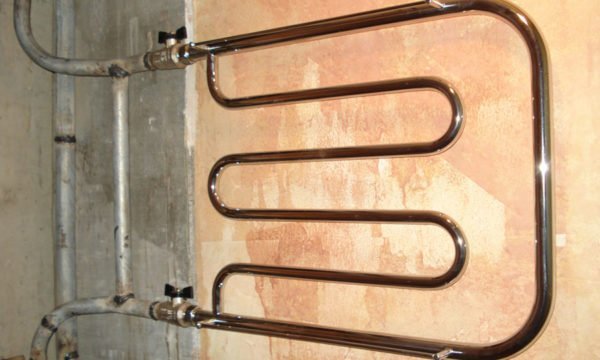
Water dryer connection.
Heated towel rails with their ridiculous power can be plugged into any outlet, regardless of the presence of grounding and wiring size. But for full-fledged heaters, the instructions are somewhat more complicated:
- The socket must be connected to earth ground and have the appropriate terminals. A bathroom is a damp room, and a phase closure on the body can lead to the most unpleasant consequences;
- The socket must have a cover to protect it from splashing water;
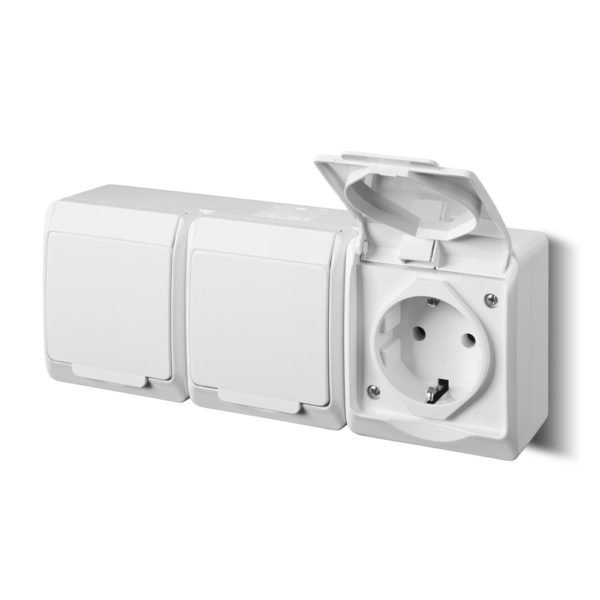

Protected sockets for the bathroom.
- Wiring is based on 1 mm2 copper wire, 8 amps peak current. Let me remind you: the current is equal to the result of dividing the power in watts by the supply voltage in volts. So, for a device with a power of 2 KW, a copper wire is needed at least 2000/220/8 = 1.36 mm2.
We suggest that you familiarize yourself with How to attach a bathroom mirror to a tile
Which heater is best for the bathroom
Before deciding on a particular type of heating for the bathroom, you should find out for yourself what goal you need to achieve.
Next, you need to consider which model of the device can be used without neglecting the technical requirements. Often, for this, they resort to the help of professional builders and designers who can help with the right choice and installation.
An important factor is financial capabilities, since the cost of various options for heating a bathroom is significantly different.
The choice of a heater in the bathroom depends on the technical conditions and the budget
We calculate the required power
The power of the heating device is its most important characteristic. Guided by this very indicator, you need to buy a heater for a particular room. In order to determine the power, you need to know the area of the room.
Related article: Bathroom screens: features and photos
Below is a small list with indicators of the area that needs to be heated and the power required for this:
- For 5-6 sq.m. need 500 watts.
- For 7-9 sq.m. will need 750 watts.
- For 10-12 sq.m. you need 1000 watts.
- For 12-14 sq.m. will need 1250 watts.
- For 15-17 sq.m. you need 1500 watts.
- For 18-19 sq.m. will need 1750 watts.
- For 20-23 sq.m. you need 2000 watts.
- For 24-27 sq.m. you need 2500 watts.
